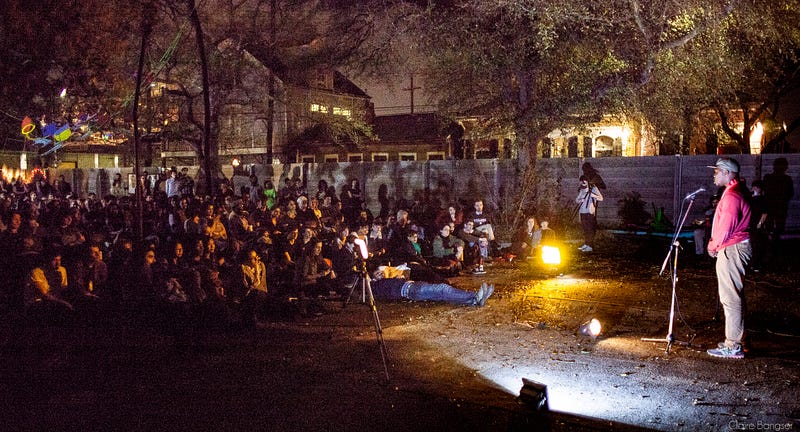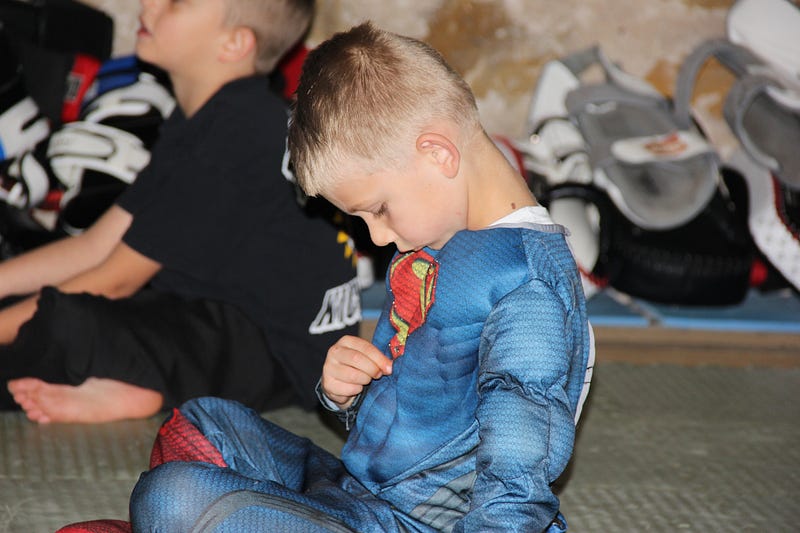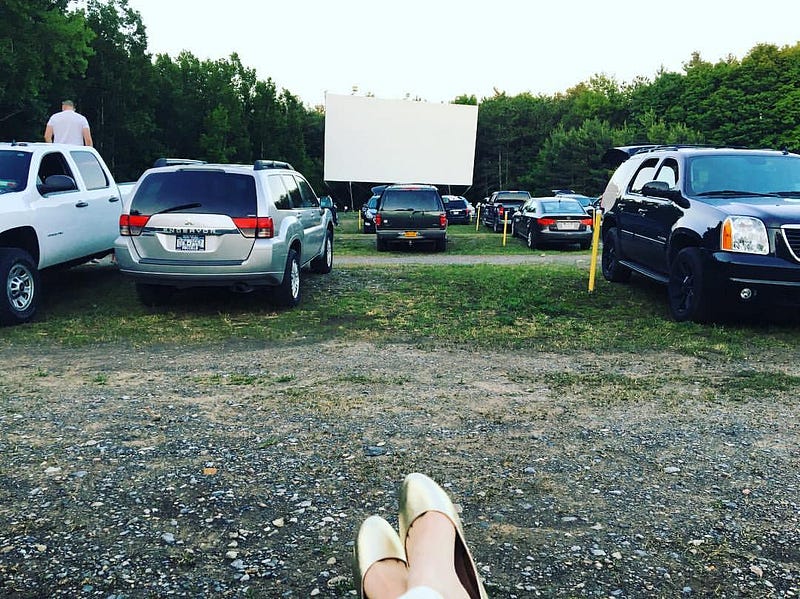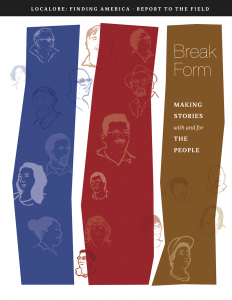15 Routes to Finding America
 “Born on
Parole,” an Unprisoned live storytelling event in New Orleans, March 2016. Photo Claire Bangs
“Born on
Parole,” an Unprisoned live storytelling event in New Orleans, March 2016. Photo Claire Bangs
Over the past year and a half, teams of independent producers and storytellers embedded at public media stations in the “far corners” of 15 communities across the country. Their mission was to invent new ways to share intimate stories, to explore what connects seemingly disparate places, and to cultivate and direct a social media portrait of the public in real time.
In short, they set about Finding America.

AIR is a national network of independent makers active in broadcast audio and podcasting, as well as multimedia journalism. This latest AIR production and two that preceded it are built on the premise that gifted producers are ideally suited to lead a public media industry in the midst of change.
Beginning in 2010, we began matching the dynamic and diverse indie producer network to the established network of public radio, television, and digital operations across the country to create a series of local productions in cities small and large — from Bellevue, Washington, to Williston, North Dakota, and Paonia, Colorado; from Los Angeles to Chicago and Washington, D.C. Together, the series of productions are now dubbed “Localore.” Our hope is that these productions will inspire both makers and reporters inside of public media.
The Localore assignment charges our producers with developing approaches that blend broadcast, digital, and live platforms. Each subsequent production is iterative, building on the lessons gleaned from the previous teams’ experiences. While this latest round of lead producers was embedded, they worked with our station collaborators and the teams they assembled to invent new models for making stories that put people they met at the front of the narrative. They were intent on turning a fresh eye and ear on the day-to-day lives of community members, cultivating them as collaborators rather than subjects of a story.
We’ve gathered these stories together in the Finding America meta-documentary: an ever-shifting interactive multimedia gallery that combines video and audio shorts produced by AIR’s documentary unit as well as the local units surfacing what I call “luminous characters.” These include a Creek preacher describing how he found his calling, a Sonoran hot-dog vendor outside the Tucson courthouse, and two women who became fast friends after an unexpected car ride.
There is curated, rolling social content from across the country along with more traditionally produced material: a week-long “town-hall” style series from Anacostia Unmapped with the WAMU’s Kojo Nmandi show, and a “presidential series” we co-produced with NPR’s All Things Considered to bring fresh new community voices to listeners across the nation.
 Brownie
Harjo’s Dojo in Holdenville, OK, from “Always Home” on NPR’s “All Things Considered.” Photo:
Allison Herrera (Invisible Nations)
Brownie
Harjo’s Dojo in Holdenville, OK, from “Always Home” on NPR’s “All Things Considered.” Photo:
Allison Herrera (Invisible Nations)What’s the blueprint?
The 15 current productions launched November 1, 2015, and incubated for up to 12 months. Each represents a three-way partnership between AIR, an independent producer hired, and a station incubator. These are not “one-off” experiments. All three agree to work together to establish new innovation capacity that the station will sustain beyond the incubation period. When we complete our period of experimentation, our goal is to leave stations with an R&D infrastructure the station will continue and, while our recent survey of the field indicates success with nearly 60 percent of station managers saying they are committed to continuing the work — we’ve learned that the impact of the work takes many forms, and is often more of a long tail at the stations.
The 2016 Finding America production was in stark contrast to the rich, immersive digital platforms we created in partnership with Zeega in 2012–13. Our current team discovered the primacy not of social media platforms but of social platforms: church services, hot dog wagons, roller skating rinks, drive-in movie theaters, food pantries — the places where people share their stories of joy and grief, celebration and creation, doing the things that make up daily living.
 “Stories
Under the Stars” at the Black River Drive-In Theater in Watertown, NY. Photo: Meredith Turk
(Homefront)
“Stories
Under the Stars” at the Black River Drive-In Theater in Watertown, NY. Photo: Meredith Turk
(Homefront)It’s no surprise, then, that from March through October of 2016 we produced 30 live events across our local communities. These are important places for us to build a new public media — places where public media is not necessarily well known — or even recognized.
The topics the producers tackled ranged widely: faith, gun violence, native lives, military service and more. We chose the single, unifying theme Finding America to bring these seemingly disparate productions together into a unified whole. By creating a single, interactive documentary site, we were intent on creating not only a more narratively rich experience, but one that saved costly and ultimately unsustainable digital investment by each local team.
The Finding America metasite is built entirely on public APIs, drawing its inspiration from Mapping Main Street, one of our first sponsored projects. The site is powered by an aggregating tool, Juicer, pulling in anything that’s hash-tagged #findingamerica and posted to Twitter, YouTube, Vimeo, SoundCloud, Facebook, Instagram, Tumblr, and other social media channels. This means we have no need to maintain a costly and cumbersome CMS in the traditional sense, and instead take a curatorial role, scanning and choosing what to make public and how.
Our producers and the AIR documentary team use the public platforms to post all media. Of the 48.3 million gross impressions registered as of February 2017, more than 5 million came via digital platforms, and at a cost of about 25¢ per impression.
Where our producers have been — and where they are going
What began in 2010 as a series of experiments to help “public radio” make the shift to a diversified “public media” has evolved into a broader movement involving hundreds of producers, station staff, community organizations, and collaborators. Those who participate in these inclusive, community-based projects are working to expand public media to more of their neighbors alongside station colleagues producing more of the day-to-day output.
 Short on
time? There’s a distilled version
too.
Short on
time? There’s a distilled version
too.After each round of Localore, we share our experiences with other journalists and media organizations. We’ve learned important lessons along the way, about expanding the boundaries of journalism and taking advantage the many tools available to us today. Our latest report, Break Form: Making Stories With and For the People — was published by American Press Institute on March 17th and is available for download here.
An important first part of the Finding America assignment was to ask our talent to suspend what they do best: to leave behind their microphones and cameras, and enter the community first as observers. What is the rhythm and flow of the place? Who are the magnetic personalities? “Repose” — observing and absorbing — as a starting point for reinvention is part of our experiment, and not simple to achieve: to enter a new place with humility, forming what turned out for some to be lasting bonds of love and friendship. This was especially difficult for some of our lead producers, who heard the clock ticking from day one and were eager to start producing, and yet was embraced strongly by more than 65 percent of our station collaborators who welcomed a respite from the everyday grind of daily news assignments.
Our approach stands in contrast to the breakneck speed of the internet, the Twitterfication of politics, and the politicization of news. We’re coming to appreciate the price we pay for speed. We miss a good chunk of what’s happening on the deeper levels of daily living. The price of deadline-driven journalism is that nuance is sacrificed to speed. Storytelling at the pace of Twitter tends to relegate whole communities of people into simple, sound bite-friendly narratives that suit the pace.
Speed, then, is one important factor that defines what’s different about our Localore: Finding America production. By experimenting with this and other aspects of traditional story-making practice, we begin to break open traditional form, and surface new ways to move deeply into communities — to make stories “with and for the people.” We are demonstrating how it is possible — necessary — that today’s new journalism be both fast and slow.
Another challenge confronting local communities today is the continuing consolidation of the newspaper industry. Nearly two decades in, it has given rise to what researcher Penelope Muse Abernathy calls “news deserts.” In her recent study from the Center for Innovation and Sustainability in Local Media at the University of North Carolina at Chapel Hill, she identifies specific rural communities with aging populations where declines in manufacturing, mining, and farming have led to the highest rates of poverty in the country. These are the communities where there are virtually no outlets for local stories and, as her case studies illustrate, where the internet has emerged as the sole source for people seeking meaningful news of the day. This is a powerful context for understanding our contemporary social and political environment. It also points to opportunity — arguably, an imperative — for those working at local public radio and television stations to fill a critical void.
Storymaking that is both fast and slow, and a critical deficit of reliable, local journalism: These are the starting points for our work, and our aspiration to “make stories with and for the people.” The work rises out of public media, but what the obstacles and lessons we share are timely and relevant to anyone with interest in elevating and expanding the ways we craft the day-to-day story of America.
The lightning bolt is Localore’s emblem. We draw the lightning and welcome it: Moments of instant, catalytic change are possible. We have also learned that real change demands that we capture those flashes of energy or insight and direct them into what we hope will be a state of sustained invention.
The projects also create optimal conditions for many of our lead producers to do their best work, and we encourage and support our lead producers in taking what they’ve created in one community and spreading it to others. The trajectory of our talent “diaspora” is the strongest evidence of how individuals, empowered by their Localore experience, drive change.
We look to Localorian Jennifer Brandel’s Hearken — a growing “people-powered” journalism platform — Julia Kumari Drapkin’s iSeeChange climate project, and the new music platform VuHaus, inspired in part by Delaney Hall’s Austin Music Map in partnership with KUT. We’ve seen Localore station producers step into leadership — Andi McDaniel who, in a few years, moved from working as a digital producer at Twin Cities Public Television to chief content officer at WAMU, NPR’s flagship station in D.C.; Sally Kane, who managed Localore incubator KVNF in Paonia, Colorado, and is now leading a rebirth of the National Federation of Community Broadcasters (NFCB); Noland Walker, a brilliant freelance film writer, who moved to senior content director at ITVS after serving as AIR’s network manager for Localore. Lead producers and stations from this latest round of Localore continue to cultivate the “green shoots” of the project they created. I can’t wait to see where they take us.
It’s also notable that our lead producers in this round were unconventionally more female (73 percent) and more racially diverse (43 percent) than a typical news team, which was an important factor in our approach. When recruiting lead producers, we explicitly sought storymakers who felt and articulated an intense connection with nontraditional audiences— and what emerged in every market were teams that should make diversity-challenged news organizations take notice.
As a result, our production units have been based in communities whose narratives are too often restricted by the 24/7 news engine to stories of poverty, injustice, or violence. Localore provides dedicated producers and respectful collaborators who build trusting relationships with people living in the communities where they’re working:
- teenagers living day to day with gun violence in Milwaukee, gun capital of the U.S.;
- families of those incarcerated in New Orleans;
- bus commuters outside of Seattle who can no longer afford to live in the city where they work;
- Yupik elders who walk the dissolving shorelines of Alaska;
- veterans living in the shadow of Fort Drum, home to the most deployed battalion in the country.
We’ve learned that the degree to which our producers establish strong relationships is directly tied to the relative success of the project.
We don’t sugarcoat difficult realities facing these communities. We do want to offer stories that expand our understanding of America’s rich diversity, and provide an antidote to daily commercial news that too often leaves viewers and listeners feeling helpless and hopeless, in a world that is out of control.
This year marks the 50th anniversary of the creation of public broadcasting. We have steep challenges and fantastic opportunities to extend our journalism to better reflect the rich diversity of America. In this context, LBJ’s 1967 call for a public broadcasting system that brings “enlightenment to all the people of the United States” is more than an inspired vision. It is a rallying cry for journalists, stations, and storymakers — coming at a moment of great national divisiveness — to use the power of media right where you live. The task is as much about expanding and diversifying public media service as it is about enlightening people already familiar with our work to new worlds just up the road.
With this work, we encourage independent producers, documentarians, podcasters, and writers like you to not only use your keen minds, but also keep your hearts open in ways that challenge your conventional understanding of what your job is, and how it should be done. The world needs your compassion as much as your skills. You are the vanguard, but you are not alone. We are ready and eager to help you.
Read the response
More adventures in making stories with and for the people by Brian Mercer
 Finding
America team closes out the first Public Media Lab, held at the MIT Open Documentary Lab in December
2015. Photo: Betsy O’Donovan
Finding
America team closes out the first Public Media Lab, held at the MIT Open Documentary Lab in December
2015. Photo: Betsy O’DonovanNote: Immerse editor Jessica Clark also served as an editor on the Break Form report, and as AIR’s media strategist during Localore’s previous round.
Immerse is an initiative of Tribeca Film Institute, MIT Open DocLab and The Fledgling Fund. Learn more about our vision for the project here.